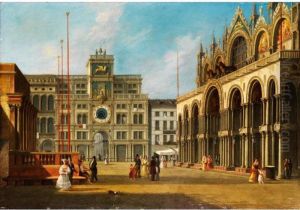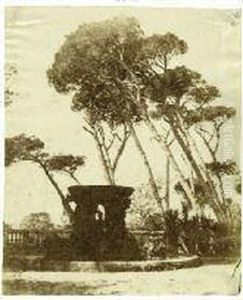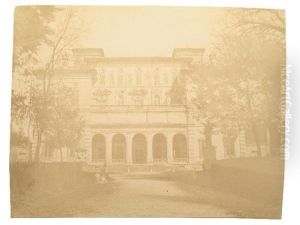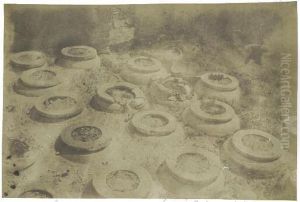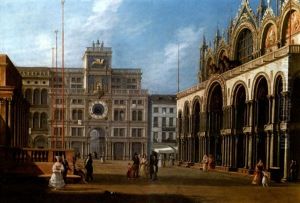Giacomo Caneva Paintings
Giacomo Caneva was an Italian photographer and painter, born in 1813 in Padua, Italy, and died in 1865. His work is significant in the history of photography, particularly in the early development of the calotype process in Italy. Caneva was among the pioneers in Italy who explored the possibilities of photography as an art form and a means of documenting landscapes and architectural wonders. He is especially noted for his contributions to the early photographic society in Rome and his influence on the Italian school of photography.
After initial training in painting, Caneva shifted his focus to photography, intrigued by its potential for realism and detail. His move to Rome in the 1840s marked the beginning of a prolific period in which he captured the city's ancient ruins, monuments, and everyday life. Caneva's work during this time is characterized by a keen eye for composition and light, qualities that were influenced by his background in painting. He was part of the Roman circle of photographers, which included figures like James Anderson and Frederick Leighton, who were instrumental in promoting photography as a serious artistic medium.
Caneva's contributions to photography were not limited to his own practice. He was actively involved in the dissemination of photographic techniques and knowledge. He collaborated with other artists and intellectuals of his time, sharing ideas and innovations. Caneva's work with the calotype process—a method that allowed for multiple prints from a single negative—was particularly important in Italy, where these techniques were just beginning to be explored.
Despite his significant contributions, Giacomo Caneva remains a somewhat elusive figure in the history of photography, overshadowed by his contemporaries in other countries. However, his photographs of Rome and its environs remain a valuable record of the city during a period of transformation and are celebrated for their artistic quality and historical importance. Caneva's legacy lies in his pioneering role in Italian photography and his efforts to establish the medium as a respected form of artistic expression.
